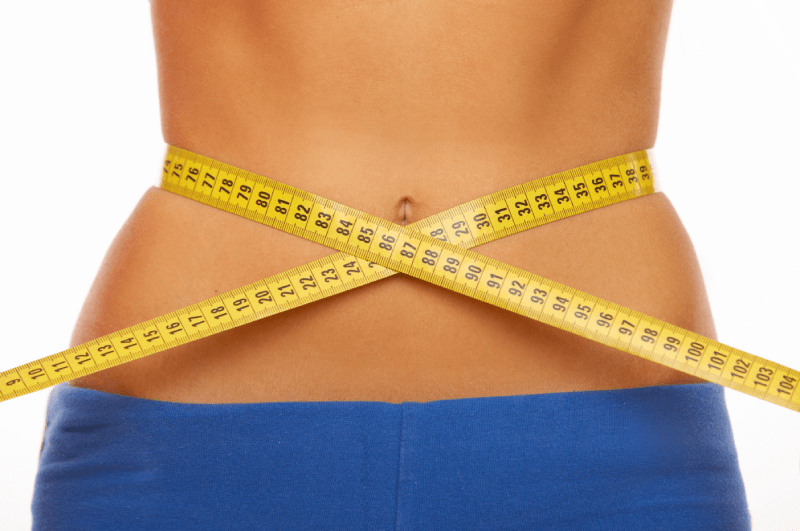The Most Populer Top 10 Weight Loss Diets

1. Intermittent Fasting:
This diet plan involves cycling between periods of eating and fasting.
Intermittent fasting is an eating pattern that alternates between periods of fasting and eating. It does not specify which foods you should eat but rather when you should eat them. During the fasting periods, you can consume no or very few calories, while during the eating periods, you can eat whatever you like. There are several different types of intermittent fasting, including the 16/8 method, 5:2 diet, and alternate-day fasting.
The 16/8 method involves skipping breakfast and restricting your daily eating period to 8 hours, such as 1 pm to 9 pm. During the remaining 16 hours of the day (including sleeping time), no food or calorie-containing beverages are consumed. This type of intermittent fasting is popular among those looking to lose weight or improve their overall health.
The 5:2 diet involves eating normally five days a week and severely restricting calories two days a week (500 calories for women and 600 for men). For example, on Monday and Thursday you could eat whatever you want within reason while limiting your calories on Tuesday and Friday to 500-600 per day.
Alternate-day fasting involves alternating between days of normal eating and days of severe calorie restriction (about 25% of your usual intake). For example, on Monday you would eat normally while Tuesday would be a fast day with very few calories consumed.
Intermittent fasting may help with weight loss by reducing overall calorie intake or by helping people stick to their diets more consistently by providing structure around meals. Additionally, some studies suggest that it may have other health benefits such as reducing inflammation and improving heart health. However, more research is needed in this area before reaching any conclusions.
I hope this overview has been helpful in learning more about intermittent fasting diets!
2. Low-Carb Diets:
These diets involve reducing your intake of carbohydrates and increasing your intake of protein and healthy fats.
ow-carb diets are a great way to lose weight and maintain good health. They involve reducing the amount of carbohydrates you eat, such as breads, pastas, sugars and starches, while increasing the amount of healthy proteins, fats and non-starchy vegetables that you consume. There are many benefits to following a low-carb diet. It can help reduce inflammation in the body, improve blood sugar levels, reduce appetite and hunger levels and help you feel more energized. Studies have also shown that it can help with weight loss and even reduce your risk of developing certain chronic diseases like diabetes and heart disease. If you’re interested in trying a low-carb diet for yourself, here are some tips to help get you started:
2-1. Start slowly: Don’t jump into a drastic change in your diet all at once. Begin by cutting out just one type of carbohydrate from your diet at a time – for example, try removing sugary drinks or pastries first – then see how it makes you feel before adding more changes.
2-2. Eat plenty of protein: Protein helps keep you full for longer periods of time so make sure to include plenty of high-quality proteins like lean meats, fish, eggs and legumes in your meals.
2-3. Add healthy fats: Healthy fats such as olive oil, avocados, nuts and seeds are an important part of a low-carb diet because they provide essential fatty acids that your body needs for energy production and cell maintenance.
2-4. Eat non-starchy vegetables: Non-starchy vegetables such as broccoli, cauliflower and spinach are packed with fiber which can help keep your digestion running smoothly while also providing important vitamins and minerals to keep your body functioning optimally.
2-5. Drink lots of water: Staying hydrated is essential on any diet but especially on a low carb one since dehydration can lead to fatigue and lack of focus so make sure to drink plenty of water throughout the day! By following these tips you’ll be well on your way towards successfully following a low carb diet! Remember that everyone’s needs are different so be sure to consult with your doctor or nutritionist before making any drastic changes to ensure it’s right for you!
3. Paleo Diet:
This diet focuses on eating foods that were available during the Paleolithic era, such as lean meats, fruits, vegetables, nuts, and seeds.
The Paleo Diet is a way of eating based on the foods that were eaten by our hunter-gatherer ancestors during the Paleolithic era. The diet consists of whole, unprocessed foods such as meat, fish, eggs, vegetables, fruits, nuts, and seeds. These foods are rich in nutrients and provide the body with essential vitamins and minerals. This way of eating has been found to be beneficial for overall health and can help reduce inflammation, improve energy levels, and support a healthy weight.
The Paleo Diet is based on the idea that what we eat today should be similar to what our ancestors ate thousands of years ago. By avoiding processed foods and eating only whole foods that are naturally available in nature, we can nourish our bodies with nutrient-dense foods that are better for us than those found in modern diets. By cutting out unhealthy processed foods, refined sugar, dairy products, grains, and legumes from our diets we can reduce inflammation in our bodies and improve our overall health. Some people have concerns about following a strict paleo diet due to its low carbohydrate content or lack of variety but there are many ways to make it more varied and enjoyable. Adding more vegetables or incorporating different types of meats can help add variety to your meals while still adhering to the core principles of the diet.
There are also many recipes available online which can help make paleo meals both delicious and nutritious. Overall the paleo diet is a great way to get back to basics when it comes to nutrition while avoiding processed food products that can cause inflammation in our bodies. By adhering to a whole food diet rich in fruits, vegetables, nuts, seeds and animals proteins we can nourish our bodies with essential vitamins an minerals while still enjoying delicious meals.
4. Mediterranean Diet:
This diet emphasizes eating whole grains, fruits, vegetables, nuts, legumes, olive oil, and fish.
The Mediterranean diet is a diet that focuses on healthy, whole foods. It is based on the traditional dishes and cooking styles of countries with a coast on the Mediterranean, such as Greece and Italy. The Mediterranean diet has been associated with many health benefits, including a lower risk of heart disease and stroke, improved cognitive function and a healthier weight. Here are some tips for following the Mediterranean diet:
- Eat mostly plant-based foods: This includes fruits, vegetables, nuts, seeds, legumes (like beans and lentils), and whole grains (like quinoa or farro).
- Include healthy fats: Olive oil is the main source of fat in the Mediterranean diet. It’s important to include other sources of healthy fats, such as avocados, olives, nuts, and seeds.
- Eat fish and seafood at least twice a week: Fish is an important part of the Mediterranean diet, as it is rich in omega-3 fatty acids, which have many health benefits.
- Limit red meat consumption: Red meat in the Mediterranean diet should be limited no more than a few times a month, as it is often high in saturated fat, which can increase your risk of cardiovascular disease.
- Choose low-fat dairy products: Dairy products such as milk and yogurt are an important source of protein in the Mediterranean diet, but it’s important to choose low-fat versions to avoid consuming too much saturated fat.
- Use herbs and spices instead of salt: Herbs and spices such as basil, thyme, thyme, rosemary, turmeric can add flavor without adding salt and can cause high blood pressure when consumed in excess.
- For wine in moderation: Red wine is often included in meals in the Mediterranean diet, but it’s important not to overdo it because alcohol can be harmful if consumed in excess. I hope these tips help you understand how to follow a healthy Mediterranean diet!
5. Keto Diet:
This diet involves drastically reducing your carbohydrate intake and replacing it with fat in order to put your body into a state of ketosis. all about keto diet
The keto diet is a low-carb, high-fat diet that has become increasingly popular in recent years. It’s designed to put your body into a state of ketosis, which is when your body burns fat for energy instead of carbohydrates.
The main idea behind the keto diet is to reduce carbohydrate intake and replace it with healthy fats like nuts, oils, and avocados. By replacing carbs with healthy fats, your body will be able to use fat as its primary source of energy rather than glucose from carbohydrates. This shift in energy source helps your body burn fat faster and more efficiently.
To get started on the keto diet, you’ll need to reduce your overall carbohydrate intake and increase your fat intake. Generally speaking, you should aim for approximately 70% of calories from fat and 25% from protein with only 5% coming from carbohydrates. To reach this goal, you’ll need to eat foods like nuts, oils, avocados, eggs, meat, fish, cheese and other dairy products. You should also avoid processed foods that are high in sugar or carbs like breads and pastas as well as sugary drinks such as soda or juice.
It’s important to note that the keto diet isn’t suitable for everyone so it’s best to consult a doctor or nutritionist before beginning this type of eating plan. Additionally, if you are taking any medications you should be sure to speak with your doctor first before making any dietary changes that could potentially interfere with their effectiveness.
Overall the keto diet can be an effective way to lose weight and improve overall health if done correctly and safely. If you’d like more information about how to get started on the keto diet or would like personalized support while on it please feel free to reach out!
6. Vegan Diet:
This diet involves eliminating all animal products from your diet and replacing them with plant-based foods such as fruits, vegetables, legumes, nuts, and seeds.
Veganism is a type of vegetarian diet where people avoid consuming any animal products. This includes avoiding eating all kinds of meat, dairy, eggs, and even honey. Vegans also avoid wearing leather, wool, and other animal products.
People choose to follow a vegan lifestyle for many reasons, including health benefits, environmental concerns, or ethical issues. There are many health benefits associated with a vegan diet including lower risk of heart disease and diabetes as well as improved digestion. A vegan diet also helps reduce the environmental impacts of food production by using fewer resources such as water, land and energy compared to other types of diets. Additionally, eliminating animal-based foods from one’s diet eliminates the need for animals to be used in food production which can be seen as more ethical by some people.
A vegan diet is generally high in fiber and low in saturated fat due to the lack of animal products in the diet. It is important for vegans to make sure they are getting enough protein via plant-based sources such as beans, lentils, nuts and seeds. They should also pay attention to getting enough calcium through plant-based milk alternatives or dark leafy greens such as kale or spinach. Additionally, vegans need to ensure they are getting enough vitamin B12 through fortified foods or supplements since this vitamin is only found naturally in animal products like meat and dairy.
Overall, following a vegan lifestyle can provide numerous health benefits while also being more environmentally conscious and ethical than other types of diets that involve consuming animal products. People interested in following a vegan lifestyle should consult with a nutritionist or doctor for help creating an appropriate meal plan that meets their individual needs.
7. Whole30 Diet:
This 30-day challenge involves eliminating certain food groups (such as dairy, grains, legumes) from your diet and focusing on whole foods like fruits and vegetables instead.
Whole30 is a diet that focuses on eating whole, unprocessed foods for 30 days straight. This means eliminating all added sugar and artificial sweeteners, grains, dairy products, legumes, and alcohol. The goal of Whole30 is to help people reset their eating habits and get back in touch with how food makes them feel. It also emphasizes the importance of mindful eating and encourages people to experiment with different types of food and combinations.
Whole30 works by promoting mindful eating and helping people recognize how certain foods can affect their body. After the 30 days are up, people are encouraged to reintroduce certain foods gradually while paying attention to how their body reacts. This can help them identify foods they should avoid or limit in the future.
In terms of what you can eat on Whole30, the diet focuses on whole, unprocessed foods like fruits and vegetables, lean proteins like fish and poultry, healthy fats from nuts and seeds, as well as some starches like potatoes or plantains.
If you’re looking for a way to reset your diet and improve your relationship with food, Whole30 may be worth a try!
8. DASH Diet:
The Dietary Approaches to Stop Hypertension (DASH) is a diet that focuses on reducing sodium intake while increasing consumption of whole grains, fruits, vegetables, lean proteins such as fish or chicken breast without skin or fat removed; low-fat dairy products; nuts; beans; and vegetable oils such as olive oil.
The Dash diet is a healthy eating plan that focuses on reducing sodium intake, increasing intake of fruits, vegetables, and whole grains, and limiting the consumption of red meat, sugar, and saturated fat. This eating plan was developed by the National Heart, Lung, and Blood Institute in an effort to lower blood pressure and reduce risk factors for heart disease.
The Dash diet consists of three main components: healthy food choices, portion control, and physical activity. Eating a variety of nutrient-rich foods such as fruits, vegetables, whole grains, low-fat dairy products, lean proteins (such as chicken or fish), legumes (beans), nuts and seeds are encouraged. In addition to eating healthy foods in moderate portions, it’s important to get regular physical activity like walking or jogging for at least 30 minutes per day.
The Dash diet includes two different meal plans: the Standard DASH Diet plan and the Lower Sodium DASH Diet plan. The Standard DASH Diet consists of 2,300 milligrams (mg) of sodium per day while the Lower Sodium DASH Diet plan is limited to 1,500 mg per day. Both meal plans are rich in nutrients such as magnesium and potassium which help promote a healthy blood pressure level.
Following the Dash diet can be beneficial for overall health because it helps reduce salt intake which can lead to lower levels of blood pressure as well as a decreased risk for heart disease. Additionally it helps promote a balanced lifestyle with plenty of physical activity along with nutritious foods that will provide essential vitamins and minerals your body needs.
So if you’re looking for a healthy way to eat that is low in sodium while still providing essential nutrients your body needs then consider trying out the Dash diet!
9. Low-Fat Diets:
These diets involve reducing the amount of fat in your diet while increasing the amount of carbohydrates that you eat in order to lose weight effectively without feeling deprived or hungry all the time .
A low-fat diet is a diet that limits the consumption of fats, usually saturated fat and trans-fats, to reduce the risk of diseases like heart disease, obesity, and diabetes.
In general, low-fat diets involve reducing your overall fat intake to 30% or less of your total daily calories. This includes reducing your intake of saturated and trans-fats to 10% or less. Additionally, you should replace these unhealthy fats with healthier options such as monounsaturated and polyunsaturated fats like those found in nuts, fish, avocado, and olive oil.
Here are some tips for following a low-fat diet:
• Incorporate more fruits and vegetables into your meals
• Choose lean proteins such as skinless chicken or fish
• Replace butter with heart-healthy oils such as olive oil or canola oil
• Choose low-fat dairy products such as milk or yogurt
• Avoid processed foods such as chips and cookies
• Limit fast food consumption
• Avoid fried foods
• Limit added sugars and sugary drinks
• Include healthy fats in your diet such as nuts and avocados.
Following these tips can help you follow a healthy low-fat diet that will provide you with essential nutrients while limiting unhealthy fats.
10 .Volumetrics Diet :
The Volumetrics Diet is a weight loss plan that emphasizes eating low calorie but high volume foods in order to feel full longer without consuming too many calories .
The Volumetrics Diet is a weight loss plan that focuses on eating foods with high water and fiber content. This approach to eating helps people to feel full while eating fewer calories. The diet encourages people to eat a variety of healthy foods, including fruits and vegetables, lean proteins, whole grains, and low-fat dairy products. This diet plan can also help improve digestion, reduce cholesterol levels, and lower blood sugar levels.
The Volumetrics Diet uses a “calorie density” approach to help people lose weight. Calorie density measures how many calories a food has per gram of food. Foods that have fewer calories per gram are considered to be low-calorie-density foods. These foods are usually high in water or fiber content, so they fill you up without providing many calories. On the other hand, high-calorie-density foods have more calories per gram of food and tend to be higher in fat or sugar content.
To follow the Volumetrics Diet, it’s important to focus on eating mostly low-calorie-density foods such as fish, poultry, beans, legumes, fruits and vegetables. High calorie density foods like cakes or processed snacks should be eaten sparingly or avoided altogether if possible. Additionally, it’s important to monitor portion sizes when following this diet plan in order to ensure that you are getting enough nutrients while keeping your calorie intake low enough for weight loss.
Overall the Volumetrics Diet is an effective way of losing weight while still enjoying a variety of healthy foods. By focusing on low calorie density foods like fresh produce and lean proteins it is possible to create meals that are both filling and nutritious without overloading on calories or unhealthy fats and sugars.
If you have tried all these diets and are not successful. Contact Us. Check out our special weight loss treatment packages for you. You can lose weight quickly and healthily with gastric balloon, stomach botox or sleeve gastrectomy treatments.








